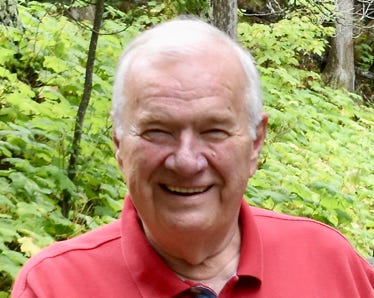DUTY, HONOR, COURAGE, RESILIANCE
Talking Proud: Service & Sacrifice

Lima Site 85, Laos: Exceptional Courage Against Impossible Odds
“Sheep-dipping” the Operators
The next problem for the US was to man the TSQ-81 and supporting equipment. The task fell to the USAF and the Strategic Air Command’s (SAC) 1st Combat Evaluation Group (CEVG), Barksdale AFB, Louisiana.
Lt. Col. Gerald “Jerry” Clayton was the 1st CEVG commander, and Lt. Colonel Clarence “Bill” Blanton was his number two. They both had MSQ-87 experience. They selected a team from volunteers.
The next issue was that US military personnel would not operate in neutral Laos. Ambassador Sullivan worked hard to make it look like the US was adhering to the Geneva Peace Accords intended to guarantee Laotian neutrality. While doing that, he knew about the vast number of combat operations US forces conducted in Laos, mainly because he had to approve them all. He was the de facto “commander” for all these operations.
Members from the 1st CEVG were all USAF. They needed a cover story to hide their identities. The early plan was to give the men false USAID identification cards, which Castle called a “shallow cover.”
Castle reported that General John McConnell, the Air Force's chief of staff, did not like this idea. He feared his men would not be protected under the Geneva Convention if caught. He directed that his Special Plans office place the program into the “black world,” the world of highly sensitive programs that required special protection. The USAF then set up a program named “Heavy Green.”
This required the USAF to “sheep-dip” the men who would go to LS-85 and operate the TSQ-81. This meant that the USAF would discharge the men from the service. Lockheed then hired them under its contract with the CIA. In other words, they were no longer members of the USAF but were now civilian Lockheed employees. Once finished with their tasks, they would return to the USAF with time-in-grade and all benefits restored.
Another cover was needed, however. For family and friends, they were assigned to the 1043rd Radar Evaluation Squadron at Bolling AFB, Washington, DC. Wives were brought to Washington, briefed, and asked to sign security agreements.
It is worth noting that Heavy Green was an Air Force Program; sheep-dipping was a USAF requirement rather than a CIA requirement.
It is also worth noting that the agreement between the USAF and Lockheed was that Lockheed exercised no management authority over the men. They remained under USAF command.
The USAF brought their wives to Washington. The wives were briefed on the administrative aspects of the program and were asked to sign a secrecy agreement. The USAF issued Permanent Change of Station (PCS) orders, assigning them to the unit at Bolling AFB. These PCS orders enabled the families to go wherever they wanted in the US.
W. Howard Plunkett, writing "Radar bombing during rolling thunder--Part II: Combat Lancer and Commando Club," said,
"In mid-October (1967), a team of forty-eight men, Air Force technicians working undercover as employees of Lockheed Aircraft Service Company, arrived at Udorn, Thailand. Crews of nine men at a time shuttled in shifts to LS-85 to operate and maintain the TSQ-81 radar station installed at LS-85. Other technicians supported the Channel 97 TACAN equipment."
The operators initially deployed to Udorn RTAFB from Barksdale AFB. They wore their uniforms and carried their military identifications while at Udorn. For Udorn, they were from Detachment 1, 1043rd Radar Evaluation Squadron, on temporary duty to Udorn. Correll pointed out that wearing the uniform was a cover when they were at a major USAF operating base. This ensured they blended in and had USAF medical and other support when and if needed.
Castle notes that while the men were at Udorn, they worked in the area set aside for the CIA’s Air America, shown here, lived off-base, and bought their meals. They switched to civilian cover when they deployed to LS-85 for their rotation. They were ferried back and forth by Air America helicopters.
Shortly after the 1st CEVG men arrived, Timothy Castle remarked that Lt. Colonel Gerald “Jerry” Clayton, USAF, the 1st CEVG commander, dropped in at the US Embassy in Vientiane. When meeting with Ambassador Sullivan, Clayton was interested in learning how the men would know the site was threatened and when they should evacuate and blow up the site. Castle said Ambassador Sullivan was unequivocal on these matters,
“Site 85 could not be held by the Hmong.”
Clayton, according to Castle, remarked,
“Ambassador Sullivan assured me that in the event of any serious enemy threat, he would order the site closed. He said we would have plenty of time to carry out an evacuation … I knew the ambassador would make the decision, and I was reassured it would not be done at the last minute.”
Borrowing Timothy Castle’s words, “The facade was in place.”
Click to zoom graphic-photo



